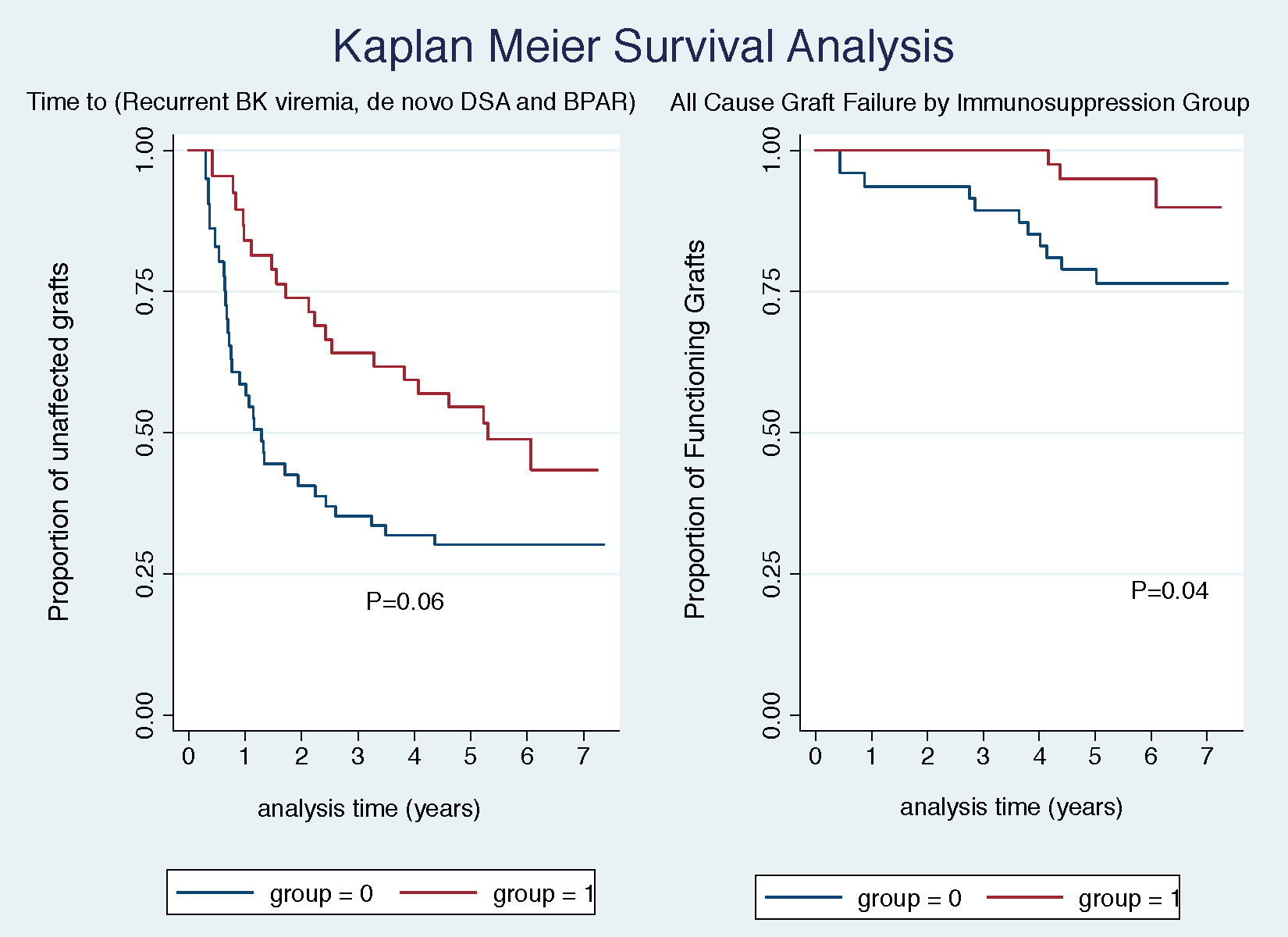Increasing Net Immunosuppression after BK Viremia
University of Michigan, Ann Arbor, MI
Meeting: 2019 American Transplant Congress
Abstract number: 535
Keywords: Alloantibodies, Graft failure, Polyma virus, Rejection
Session Information
Session Name: Concurrent Session: Kidney: Polyoma
Session Type: Concurrent Session
Date: Tuesday, June 4, 2019
Session Time: 4:30pm-6:00pm
 Presentation Time: 5:42pm-5:54pm
Presentation Time: 5:42pm-5:54pm
Location: Ballroom B
*Purpose: BK viremia is associated with inferior kidney allograft outcomes. Typical treatment involves reduction in immunosuppression. However reduction in immunosuppression is also likely to lead to increased immune response against the allograft. We tested the hypothesis that increasing net immunosuppression among those with resolved or low grade BK viremia lead to improved graft outcomes.
*Methods: We conducted a retrospective analysis of patients transplanted at a large midwestern academic medical center from July 2011-June 2013. All patients who were positive for BK viremia (termed primary event) with a peak level above 1000 copies/ml (Viracor laboratory) were selected to be included in the study. Changes in immunosuppression were noted from nursing notes and confirmed from the clinic visits/medication list in the EMR. Our outcome of interest was time to a composite of recurrent BK viremia, Biopsy Proven Acute Rejection (BPAR) and de novo DSA (together termed secondary event) as well as All Cause Graft Failure. Recurrent BK viremia was defined as reemergence of BK >1000 copies, if had become undetectable, doubled from prior and/or affected another decrease in IS when it had never become undetectable. Changes in immunosuppression between the primary and secondary event were classified as follows. Group 0 : After the initial reduction due to primary event, net immunosuppression was not increased. Group 1: The net immunosuppression was increased. Patients entered the analysis at the time of the primary event.
*Results: 88 patients were available for the study with 44 in Group 0 and 44 in Group 1. There was no statistical difference between the groups with respect to gender, pretransplant sensitization and peak BK viremia levels. Similar proportion of patients in each group had undetectable BK viral levels. Figure below highlights that the rechallenging with increased net immunosuppression (Group 1) lead to lower composite of recurrent BK viremia, de novo DSA and BPAR. The lower composite was driven by lower de novo DSA formation and BPAR. There was an increased rate of recurrent BK viremia with net increase in immunosuppression (Group 1). However, all cause graft loss was significantly lower in the group that was rechallenged with immunosuppression.
*Conclusions: Rechallenging patients with increasing immunosuppression after BK viremia leads to a reduced risk of overall graft failure. In the future randomized control trials focused specifically on increasing immunosuppression in those with undetectable or low grade BK viremia to reduce risk of graft failure need to be conducted.
To cite this abstract in AMA style:
Cotiguala L, Masood A, Park J, Naik A. Increasing Net Immunosuppression after BK Viremia [abstract]. Am J Transplant. 2019; 19 (suppl 3). https://atcmeetingabstracts.com/abstract/increasing-net-immunosuppression-after-bk-viremia/. Accessed December 21, 2025.« Back to 2019 American Transplant Congress

